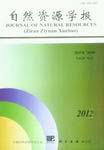SHEN Jing-hong, LU Yu-qi
In the paper 338 cities in China are regarded as tourism destinations and tourist markets. Using the attraction opportunity model, the author surveys the attraction index of tourism resources in the Chinese city territory, and taking Nanjing as an example, divides traveling destinations and tourist markets as 5 ranks through the GIS space visualization. The first three higher grades tourism destination cities gradually declining from centre to periphery encircle Nanjing. It proves fully that location acts basic function. The result is that the distribution of different ranks traveling destinations of Nanjing shows the weaken rule away from distance, but it presents the position spanning phenomenon. Tourist markets also are assorted as a five-rank classification. It shows most of the tourist markets of Nanjing cluster around it, and the grade declines from centre to periphery, western to eastern. But there is no strict bound among all grade tourist markets, and they interlock mutually. The phenomenon takes place in the third, the fourth, and the fifth tourism destinations. When a city's tourism size is larger than other cites around, the weaken rule away from distance will be not distinct, and the size of tourism destination will control their grade locations of tourist markets for the destination's immense attraction. Then it causes that the grade of remote tourist market is higher than the nearer one. The grades of tourist market at the two poles are few while those in the middle are many. That is to say, both the higher and lower grade tourist markets are few, and the medium grade tourist markets are many. The author evolves the model of attraction index countering thoughts to survey ranking list of attraction index in the Chinese cities, and divides it into five classifications and visualize it using GIS. The result shows that there are no clear bounds among the five classification cities. They interlace each other. But the attraction of the cities still takes on the dim outline from bigness to smallness. Basically, the most attractive cities are located in eastern and central areas. The attraction gradually becomes weak from eastern to western, from central to southern and northern. In the end, taking the accessibility of Chinese cities as the foundation, the author divides ten classifications of development degree of tourism resources in Chinese cities in terms of uniformity or not between ranking list of attraction indexes and tourist scale to contrast them for development of city tourism. The ten classification cities are fully developed tourism cities and national developed tourism cities, national developing tourism cities, national less developed tourism cities, local developed tourism cities, local developing tourism cities, local less developed tourism cities, outlying developed tourism cities and outlying developing tourism cities and outlying less developed tourism cities.
